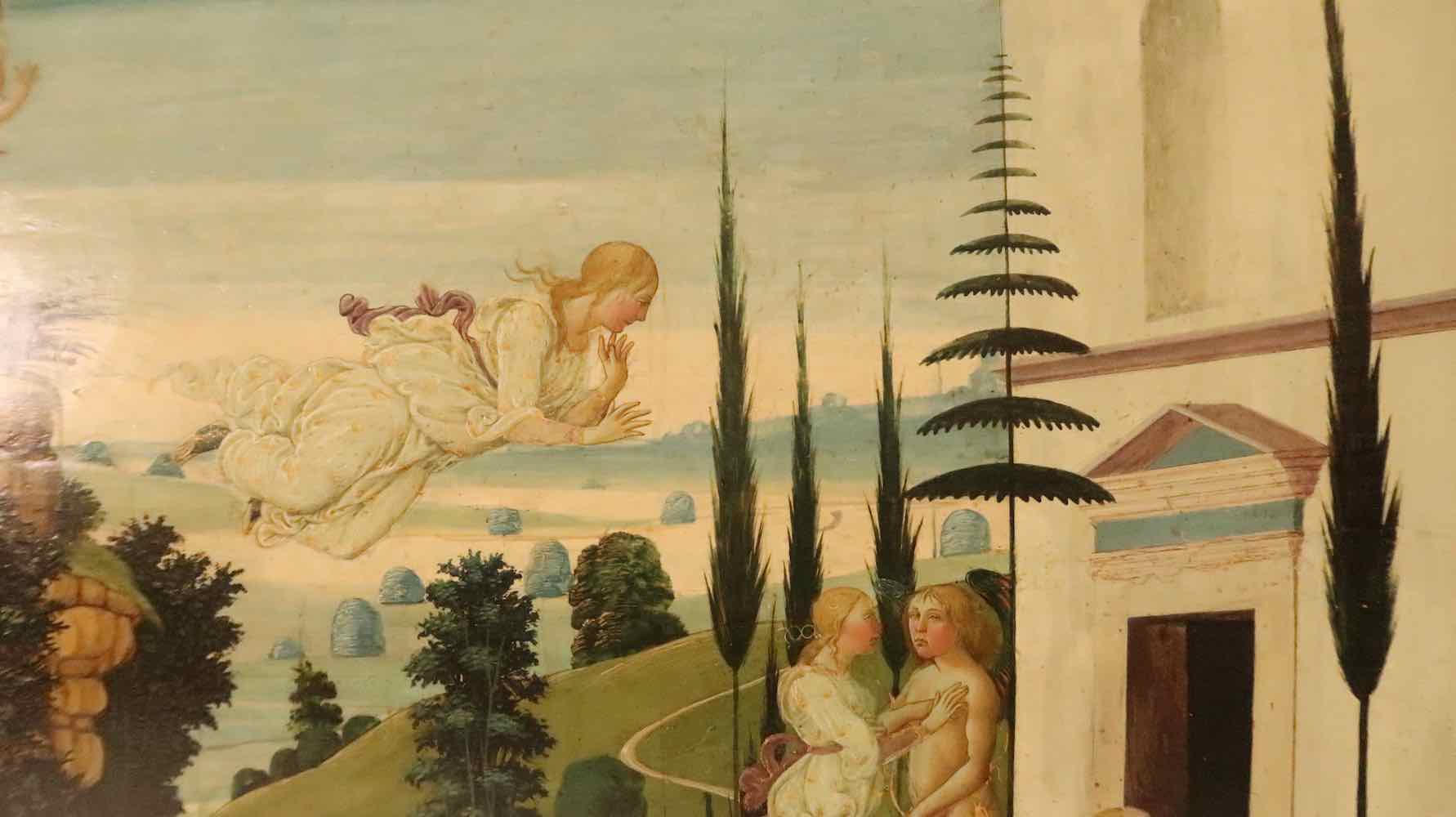About the Painting
By Kate Noble
This is one of a series of posts from Inspire: A Celebration of Children’s Art at the Fitzwilliam Museum, Cambridge from the 10th December 2019 until the 22nd March 2020.

This picture tells the first half of the ancient Greek story of a human princess, Psyche, who marries the god of love, Cupid. It was painted for a very grand bedroom in fifteenth-century Florence, which doubled as an entertaining space for the wife’s friends. The bedchamber was furnished at the time of a wedding, with a bed and chests but also painted stories that celebrated the love of a newly married couple. This story highlights the loyalty of the bride to the groom, as was expected in the fifteenth century.
The Story of Cupid and Psyche
The story is read from left to right like a cartoon strip.

Cupid is sent to cast a spell on Psyche by his mother Venus, who is jealous of Psyche’s beauty.

Cupid falls in love with Psyche and is unable to carry out Venus’ evil plan.

Psyche is blown off the top of a mountain by the god Zephyr who carries her safely down to rest in a soft bower.

When she awakes, she finds herself at a beautiful palace where she is welcomed by an invisible, but kind, master (Cupid, in hiding from his mother). He invites Psyche to live with him on the condition that she will never ask his true identity. They are happy for a while but then Psyche’s sisters persuade her to look at him whilst he sleeps. A drop of oil lands on his skin, he wakes up and is angered by Psyche’s lack of trust.

The story continues in a second panel (in a private collection). Cupid returns to his mother, Psyche searches for him and is captured and enslaved by Venus. Cupid pleads with Jupiter, king of the gods, to free Psyche. He agrees, and Cupid and Psyche are married.
Does the story remind you of any other fairy tales you know?
Go back to Inspire: A Celebration of Children’s Art in Response to Jacopo del Sellaio’s Cupid and Psyche
Inspire – December to March 2020, was an exhibition of art made by primary school children and celebrated creativity in Cambridgeshire schools. It championed the on-going importance of cultural learning and the visual arts for all children and young people.
Based on the National Gallery’s Take One Picture, The Fitzwilliam Museum and AccessArt teamed together to offer free Inspire 2020 CPD (Continued Professional Development for Teachers), focusing on one painting, Cupid and Psyche by Jacopo del Sellaio, as a source of ideas and inspiration.
Del Sellaio’s Cupid and Psyche was on display next to the children’s work in the Octagon Gallery.
With very special thanks to Kate Noble, Miranda Stearn, Sarah Villis, and Holly Morrison for making this project happen and Alison Ayres.

